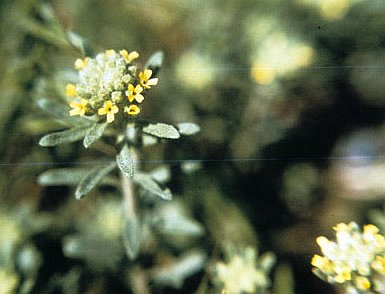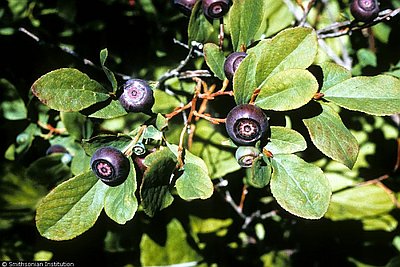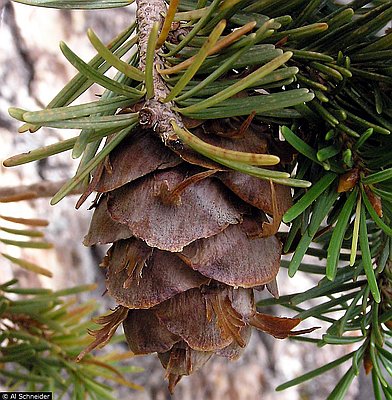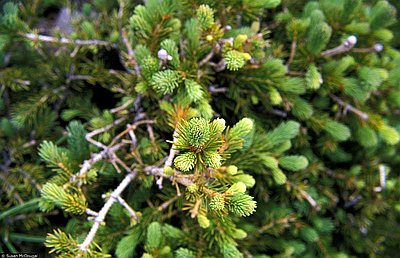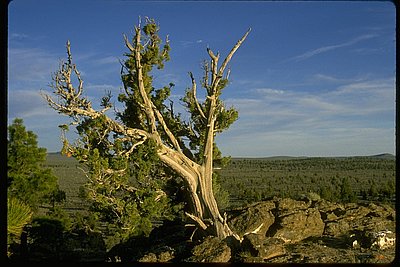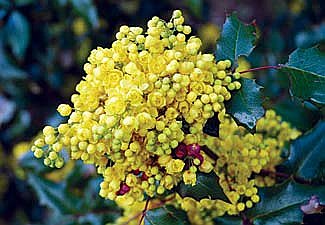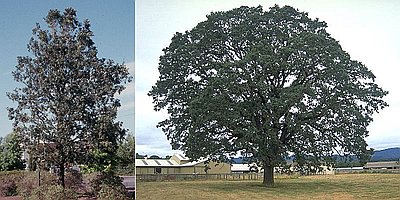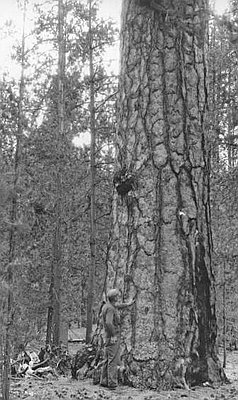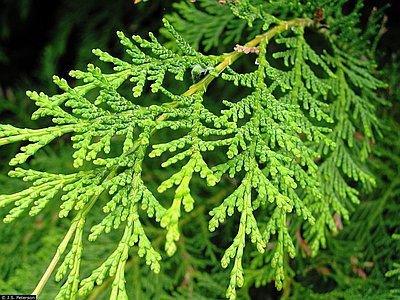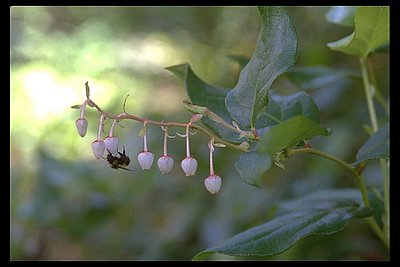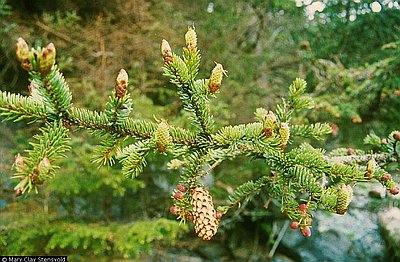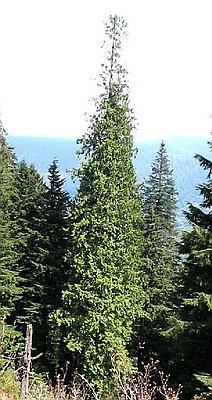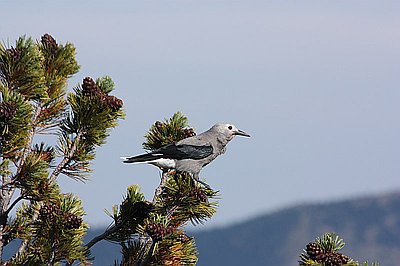Frank A. Lang
Frank A. Lang was a professor at Southern Oregon University, where he taught systematic botany, plant ecology, conservation of natural resources, and biological illustration. He held degrees from Oregon State College (B.S.), University of Washington (M.S.), and University of British Columbia (Ph.D.). He was associate editor of Kalmiopsis, the journal of the Native Plant Society of Oregon, and studied the vegetation and flora of the Klamath Ecoregion. He served on the Jackson County Natural Resources Advisory Committee, the Medford District Bureau of Land Management Natural Resources Advisory Committee, and the Board of the Crater Lake Natural History Association. Frank passed away on June 26, 2019.
Author's Entries
-
![Abraham Lincoln Savage (1864-1950)]()
Abraham Lincoln Savage (1864-1950)
At the time of his death in July 7, 1950, Abraham Lincoln Savage was considered one of Josephine County's oldest and most distinguished citizens. He spent his entire life in southwest Oregon as a teacher, school superintendent, county treasurer, and amateur botanist in one of the most diverse botanical areas …
Oregon Encyclopedia
-
![Alyssum]()
Alyssum
Until recently, the genus Alyssum in the Mustard family (Cruciferae or Brassicaceae) was not an important part of the Oregon flora. One species, A. alyssoides, yellow alyssum or pale madwort, is a widespread innocuous weed found in the southern Oregon Cascades and northeastern Oregon. Two others, A. …
Oregon Encyclopedia
-
![Blueberries and Huckleberries]()
Blueberries and Huckleberries
Big, fat, store-bought, domesticated blueberries are as close as most Oregonians come to eating Oregon’s native huckleberries. The two fruits differ in much the same way as the so-called wild Himalayan blackberry, Rubus armeniacus, a naturalized weed, differs from the native wild blackberry, R. ursinus, dew berry, or trailing blackberry. …
Oregon Encyclopedia
-
![Conifers]()
Conifers
Conifers (cone-bearing trees) are the major plant group in Oregon in terms of numbers and biomass. No group of plants has played a greater role in Oregon's history, ecology, and economics than the conifers. Conifers grow from sea level to mountain tree line throughout the state and dominate the landscape, …
Oregon Encyclopedia
-
![David Douglas (1799-1834)]()
David Douglas (1799-1834)
David Douglas is one of the best-known botanists in Oregon history, primarily because of the tree that bears the common name Douglas-fir (Pseudotsuga menziesii, once Pinus douglasii), the Oregon state tree. From humble beginnings and through fortunate circumstance, he became a highly regarded collector of Pacific Northwest …
Oregon Encyclopedia
-
![Douglas-fir]()
Douglas-fir
Douglas-fir (Pseudotsuga menziesii), perhaps the most common tree in Oregon, is the most important conifer in the state because of its ecological and economic significance. The Oregon legislature recognized this when it designated Douglas-fir the official state tree in 1939. Eight of ten conifers west of the Cascades …
Oregon Encyclopedia
-
![Elmer Ivan Applegate (1867-1949)]()
Elmer Ivan Applegate (1867-1949)
Elmer Ivan Applegate was an important early Oregon botanist best known for his monograph of trout lilies (Erythronium) and for his role in organizing the Klamath Irrigation District. He was born near Ashland, March 31, 1867, of pioneer stock; he was the grandson of Lindsey Applegate, wagon …
Oregon Encyclopedia
-
![Engelmann Spruce]()
Engelmann Spruce
With its stiff, sharp-pointed needles and scaly bark, Engelmann spruce are hard to miss among the firs and hemlocks of Oregon's forests. Moisture-loving trees, they can form nearly pure stands in high-elevation wet areas such as bogs, streamsides, and margins of wet meadows. Its shallow root system can be Engelmann …
Oregon Encyclopedia
-
![Incense-cedar]()
Incense-cedar
Incense-cedar (Calocedrus decurrens) tolerates a variety of ecological conditions. Although it grows as a riparian (stream-side) tree or under other high moisture conditions, it is much more common in dry sites, where it is seldom a dominant species. Incense-cedar is especially drought tolerant; it can close its leaf …
Oregon Encyclopedia
-
![John Jeffrey (1828-?)]()
John Jeffrey (1828-?)
In 1850, a group of influential Scottish and British botanists and horticulturalists organized the Oregon Association to send a handpicked plant collector to bring back plants for the sponsors. They selected John Jeffrey to follow in the footsteps of David Douglas in a search for new botanical treasures. Jeffrey was …
Oregon Encyclopedia
-
![Juniper]()
Juniper
Western juniper (Juniperus occidentalis) is emblematic of central and eastern Oregon, where it thrives in the arid climate and extreme temperatures of the high desert. In addition to western juniper, two other junipers occur in Oregon: common juniper (Juniperus communis) and Rocky Mountain juniper (Junperus scopulorum …
Oregon Encyclopedia
-
![Klamath midge]()
Klamath midge
Upper Klamath Lake's nutrient-rich waters support an array of aquatic and terrestrial organisms, ranging from bacteria and algae to fish and other vertebrates, including birds. The many invertebrates include the Chironomidae, an insect family of nonbiting midges, in the fly Order Diptera. In spring and early summer enormous numbers of …
Oregon Encyclopedia
-
![Lodgepole pine]()
Lodgepole pine
Oregon's only native two-needle pine, Pinus contorta, commonly called lodgepole pine, is widely distributed across the state in a variety of diverse ecological habitats, from windswept ocean shores to mountaintops. Pinus contorta is named for its gnarled, twisted shape in its seashore habitat or, perhaps, the gentle twist in …
Oregon Encyclopedia
-
![Myrtlewood]()
Myrtlewood
Oregon-myrtle (Umbellularia californica) grows along the Pacific Coast from Douglas County, Oregon, to San Diego, California, in the Coast and Klamath mountains and along the west slope of the Sierra Nevada. The tree is also known as California-laurel, California bay laurel, pepperwood, or some fifteen other common names. The …
Oregon Encyclopedia
-
![Noble fir]()
Noble fir
Noble fir (Abies procera), also known as red fir or larch, is indeed noble, tallest of the true fir genus Abies. Its generic name, Abies, means rising-one, from the ancient Latin abeo, meaning tall tree or ship. The species name, procera, means very tall or …
Oregon Encyclopedia
-
![Oliver Matthews (1892-1979)]()
Oliver Matthews (1892-1979)
Oliver Matthews, who was born on March 24, 1892, was a classic nineteenth-century botanizer who was fanatically devoted to the study of Oregon's trees. The self-taught dendrologist and self-described "botanical tramp" spent much of his free time driving around Oregon in his Model-A Ford, "Old Henry," in a search for …
Oregon Encyclopedia
-
![Oregon Grape]()
Oregon Grape
Oregon grape is a common name for members of the barberry family, Berberidaceae. The six native species of the plant are widely distributed through Oregon in a variety of habitats on both sides of the Cascade Mountains to the coast and in the northeastern part of the state. Some species …
Oregon Encyclopedia
-
![Oregon white oak]()
Oregon white oak
Oregon white oak, Quercus garryana, grows along the Pacific Coast from southern California north through the interior valleys of western Oregon and the Puget Sound Lowland to southwest British Columbia, where it is called Garry oak. It also grows in the Columbia River Gorge, in eastern Oregon, and along the …
Oregon Encyclopedia
-
![Pacific madrone]()
Pacific madrone
On May 2, 1792, Archibald Menzies, a surgeon and naturalist on the George Vancouver Expedition, landed on the shores of an island where the Straits of Juan de Fuca join Puget Sound. He found not only pines and alder but also what he called the “Oriental Strawberry Tree,” which he …
Oregon Encyclopedia
-
![Pacific yew]()
Pacific yew
The western or Pacific yew, Taxus brevifolia, belongs to the yew family Taxaceae. It is unusual among evergreen trees with needle-like leaves because its single seed is partially enclosed by a fleshy pink structure called an aril. Most Oregon evergreens have seeds borne in brown woody cones (pines) or small …
Oregon Encyclopedia
-
![Ponderosa pine]()
Ponderosa pine
Ponderosa pine (Pinus ponderosa)—also known as yellow, western yellow, pondosa, blackjack, or bull pine—is one of the most widespread, easily recognizable pines in Oregon and the Mountain West. Its tall, straight, yellowish to reddish-brown trunks in a park-like setting are a pleasant, familiar sight in many parts of …
Oregon Encyclopedia
-
![Port Orford Cedar]()
Port Orford Cedar
Port-Orford-cedar (Chamaecyparis lawsoniana)—also known as white or Oregon-cedar, ginger-pine, or Lawson cypress—is widely known and recognized for its horticultural uses and the quality of its wood. Its species name, lawsoniana, honors Charles Lawson (1794-1873), the Edinburgh nurseryman who first introduced the species to horticulture. There are five …
Oregon Encyclopedia
-
![Salal]()
Salal
Both Meriwether Lewis and William Clark wrote about salal (Gaultheria shallon), which they first encountered on the Oregon Coast near Astoria in 1806. They noted that elk fed on its leaves and that Natives dried the dark purple berries in cakes or loaves. Salal is a handsome and resilient …
Oregon Encyclopedia
-
![Shasta red fir]()
Shasta red fir
The Shasta red fir (Abies magnifica var. shastensis), or silvertip, in southwest Oregon and northwest California has been a source of confusion because of its similarities to the California red fir (Abies magnifica var. magnifica) and the noble fir (Abies procera). Botanists and foresters …
Oregon Encyclopedia
-
![Sitka spruce]()
Sitka spruce
Sitka spruce (Picea sitchensis) is also known as the coast or tidewater spruce. Its common name, Sitka, reflects the place of its Alaskan discovery; coast, its geographical distribution; and tidewater, its habitat. Sitka spruce was first collected by Archibald Menzies in 1791, but it was not given a …
Oregon Encyclopedia
-
![Sugar pine]()
Sugar pine
Sugar pine (Pinus lambertiana) is one of the great conifers of the western United States, if not the world, in stature (the largest of the pine genus) and usefulness. Early botanist David Douglas named the sugar pine in 1827 to honor British pine expert Aylmer Bourke Lambert (1761-1842). …
Oregon Encyclopedia
-
![Tules]()
Tules
In Oregon and much of the western United States, tule is the common name for two species of emergent plants that grow in shallow water of marshes, muddy shores, and lakes. These sedges (family Cyperaceae) are named hard-stemmed (Schoenoplectus acutus var. occidentalis) and soft-stemmed (S. tabernaemontani) …
Oregon Encyclopedia
-
![Western hemlock]()
Western hemlock
Western hemlock, or Alaska-spruce (Tsuga heterophylla), is a common conifer that grows in the cool, moist forests of northwest Oregon. Tsuga is the Japanese name for the western hemlock. Its specific epithet (species name) heterophylla refers to its variability in needle length. There are nine species—four in North …
Oregon Encyclopedia
-
![Western larch]()
Western larch
Western Larch (Larix occidentalis) often goes unnoticed much of the year. In the fall, in mixed stands with other conifers or growing together, larches stand out when their needles turn a flaming golden yellow before dropping to the ground. The deciduous trees spend winters as ghosts of their …
Oregon Encyclopedia
-
![Western red cedar]()
Western red cedar
Western red cedar (Thuja plicata) is one of the grand trees that grows in moister forests of Oregon and the Pacific Northwest. Theophrastus, a student of Aristotle’s, gave the name Thujato a tree with fragrant, resinous wood. Plicata refers to the folded nature of the tree’s scale-like …
Oregon Encyclopedia
-
Whitebark pine
Whitebark pine (Pinus albicaulis) is arguably Oregon's quintessential timberline tree. The five-needle pine grows under the harshest of environmental conditions, frequently as a low twisted krummholz shrub; a small twisted tree; or a multistemmed clump of trees so close that they appear to be one. For centuries, Native …
Oregon Encyclopedia



